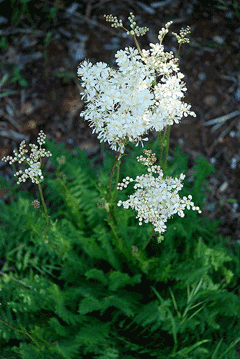Rank Species | Genus Filipendula Higher classification Filipendula | |
 | ||
Similar Filipendula, Meadowsweet, Rosaceae, Galium verum, Briza media | ||
Filipendula vulgaris, commonly known as dropwort or fern-leaf dropwort, is a perennial herb of the family Rosaceae closely related to Meadowsweet. It is found in dry pastures across much of Europe and central and northern Asia mostly on lime.
Contents
The genus name comes from Latin filum ("thread") and pendulus ("hanging") in reference to the root tubers that hang from the roots in some species. Specific epithet means common. The common English name "dropwort" comes from the tubers that hang like drops from the root.
The crushed leaves and roots have a scent of the oil of wintergreen (methyl salicylate).
Growth
It has finely-cut, radical leaves, fern-like in appearance which form a basal rosette, and an erect stem 20–50 centimetres (8–20 in) tall bearing a loose terminal inflorescence of small creamy white flowers. The flowers appear in dense clusters from late spring to mid summer atop sparsely leafed stems about 30 cm tall.
This plant prefers full sun to partial shade. It is more tolerant of dry conditions than most other members of its genus. It is a perennial of chalk and limestone downs and on heaths on other basic rocks.
Cultivation
Propagation is by seed and the division of the creeping roots. The tuberous roots and young leaves can be cooked as a vegetable or eaten raw as a salad. The taste is bitter sweet. Mature leaves smell of oil of Wintergreen when crushed, due to the release of methyl salicylate.
